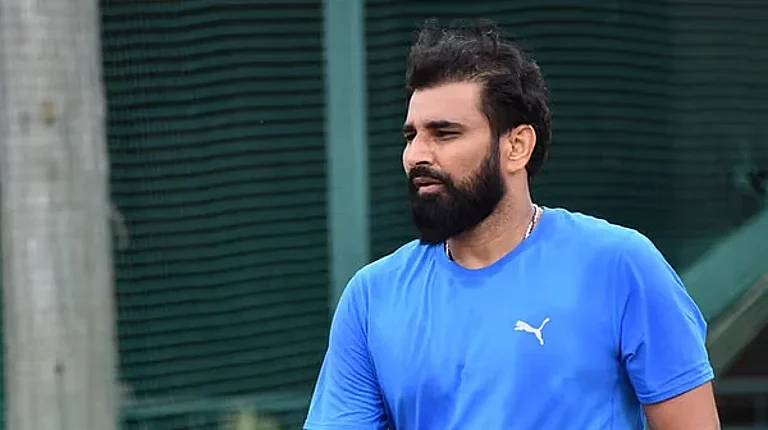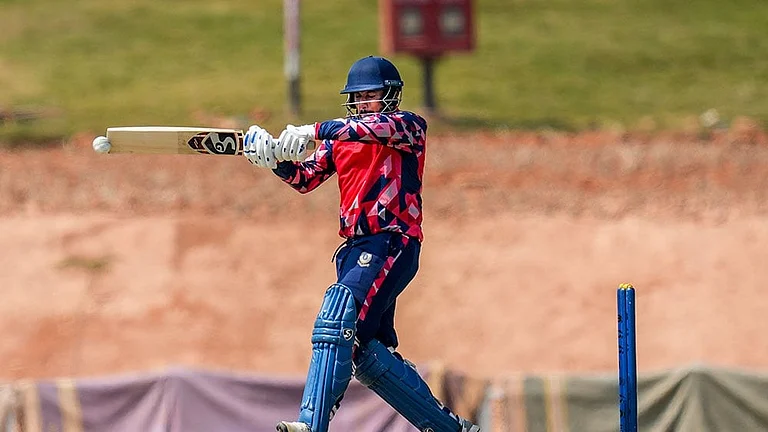A toddy-tapper climbs down a palm tree, his legs bent out from his hips in a distorted ‘W’, the soles of his feet gripping and releasing the trunk till he reaches terra firma. He holds out to you a cupful of neera—sweet, unfermented sap from the palm efflorescence. Even if filter coffee is your preferred wake-up pick-me-up, neera can bring about a quick conversion. Yellow weaver-birds peer from their nests to check you, the visitor, out. Meanwhile, the neera takes charge and you are suffused with a sense of peace. This is your welcome to Pochampally. While silk woven in the ikat style is what Pochampally is about, a brief stopover by a swaying paddy field on the way to the Handloom Park can make your day too. The weaving village of Pochampally, about 60 km from Hyderabad, combines the silken allure of its saris so well with the romance of nature.
Colourful spindles and yarn hang outside houses. As the morning progresses, the thak-thadaak of looms gains in volume. It’s magical to watch the irresistibly intricate designs take shape as the weavers ply their craft, each piece demanding detailed, patient work. Since every piece is hand-woven and the designs are laid out piece by piece, the watchword is uniqueness. The tourism complex at the village gives just a foretaste of this process, grounded in years of traditional expertise; for the complete magic to unfold, one must visit the handloom park, in Kanumukkala village, just a few kilometres from Pochampally proper. It’s spread over 24 acres and began functioning in 2009 and trains men and women in the intricate process behind the creation of ikat saris. Visitors are allowed to occasionally try their hand at working the looms.
Picture yourself working out on a cross-trainer; then visualise yourself trying to play table tennis at the same time, your eyes darting from left to right, right to left, following the flying jenny that carries the thread across. Then there’s the design to remember, taking shape slowly. That’s the sort of skill a Pochampally weaver displays. And this is just the last part, the culmination. Before reaching this stage, the silk yarn has to be set, marked, tied-and-dyed, sized and put through many more processes before the weaving begins. Weaving makes a multi-tasker out of you. If weaving isn’t for you, warm down by spinning the charkha, fascinating once you get the hang of it. “Students from the National Institute of Fashion Technology, delegates from the National Institute for Rural Development and many foreigners come here to understand the art,” says Shekhar, a master weaver, as he shows us around.
Back in Pochampally, many friendly families offer to demonstrate the art of weaving in return for some gupshup. It is common to see small units, headed by a master, with six or seven looms worked by hired weavers. At one such unit, Prasanna, a weaver, says he and his wife work for about 10 hours a day. “It takes a week to make one sari.”
My newfound respect for the art of ikat prevents me from haggling, as I shop for a sari at the Pochampally Handloom Weavers Cooperative Society which houses some of the best collections. Pochampally is also the village where Acharya Vinoba Bhave began the Bhoodan movement in 1951, persuading zamindars to part with a piece of their land for peasants. The Vinoba Ashram which stands next to the tourism complex has clearly seen better days, though: some precious portraits of Vinoba Bhave are covered in cobwebs. Pochampally is also a temple palle (village). The Markandeya temple, with its quiet environs, is worth a visit. But it is the bewildering process of a sari taking form on the handlooms that’s a vision to behold.


























